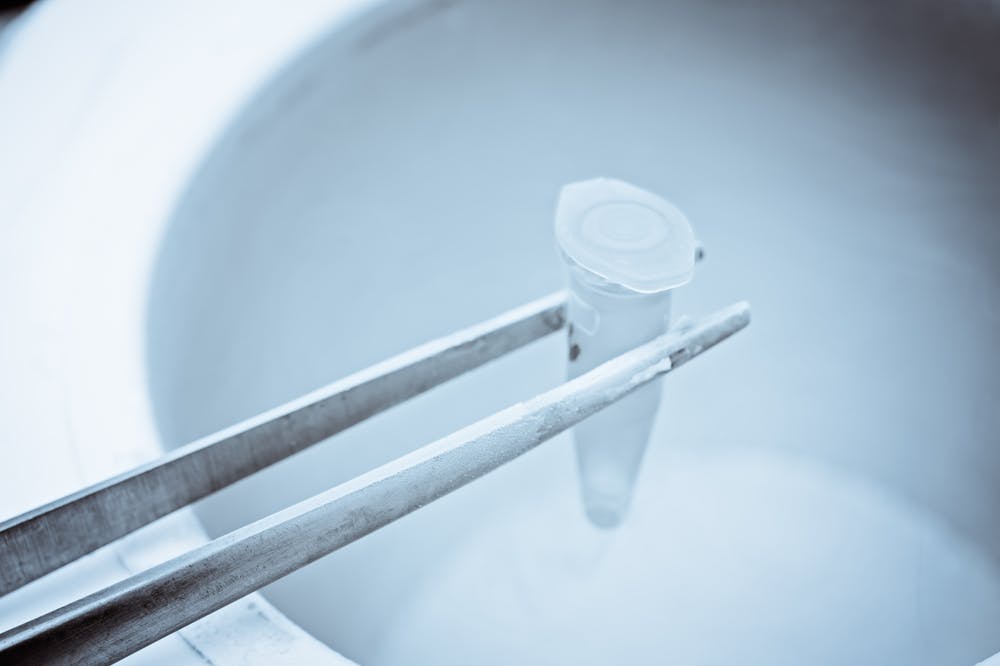Cryopreservation of ovarian tissue was still considered experimental just a few years ago, but it is now a viable fertility preservation option for women undergoing cancer treatment. This procedure can help cancer patients — and some women experiencing infertility — achieve a healthy pregnancy that leads to a live birth.
An Overview of Cryopreservation of Ovarian Tissue
Cryopreservation removes tissue from the ovarian cortex, prepares it and freezes it to be transplanted when a woman is ready to conceive. This procedure usually takes place before cancer treatment, such as surgery or chemotherapy, begins. The specific techniques used for freezing and transplanting the ovarian tissue can vary between clinicians, but the basic process remains the same.
First, all or part of the ovary is removed through laparoscopy. The medulla is separated from the cortex and the cortex is divided into strips. These strips, which contain the primordial follicles, are then frozen. Some studies report a slow freezing process is best, but the newer fast-freezing method of vitrification can also be successful.
The Transplantation Process
Once a patient is ready to have ovarian tissue returned to her body, the tissue may be transplanted in different areas: orthotopically to the pelvis, or subcutaneously to the abdomen or forearm. However, orthotopic transplantation is the only method that has led to live births thus far.
Transplanting ovarian tissue close to the primary blood supply of the ovary may lead to the best results. One study in Human Reproduction that focused on treating infertility in patients with primary ovarian insufficiency found that transplanting the tissue in the serosa of the fallopian tubes was beneficial because of their high vascularity. This method also made it easier for providers to monitor follicle growth.
Timing and Monitoring the Transplant
Thawed tissue has a limited life span, so ovarian tissue transplantation should take place immediately before a patient wants to restore fertility and attempt to conceive. Transvaginal ultrasound is essential for monitoring follicle growth and determining the antral follicle count after transplantation.
One study published in the Journal of Assisted Reproduction and Genetics found that follicle-stimulating (FSH) hormone levels and menstrual cycles returned to normal within about five months after transplantation of either fresh or frozen ovarian tissue. Regular ultrasounds can help providers track this recovery and evaluate a patient's potential for a spontaneous pregnancy or successful in vitro fertilization (IVF).
Other Possibilities
Cryopreservation may also be used for women with Turner syndrome, but the tissue samples would need to be taken while their residual follicles remain available. In adolescents with primary ovarian insufficiency or Turner syndrome, monitoring the ovarian reserve via ultrasound is essential to offering fertility preservation options before the reserve diminishes.
As cryopreservation of ovarian tissue gains traction and continues to see success in research trials, it may become a viable option for your patients who are weighing their fertility preservation options.



